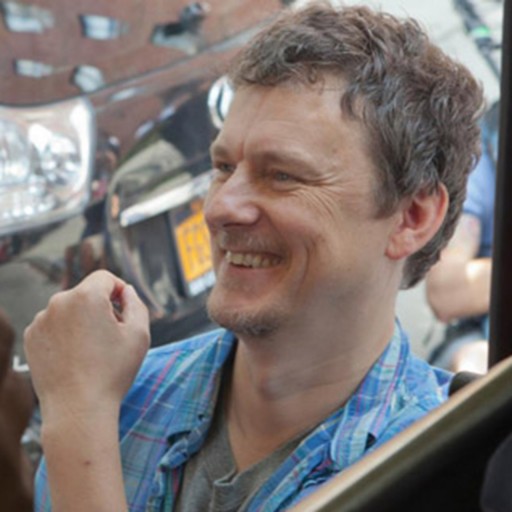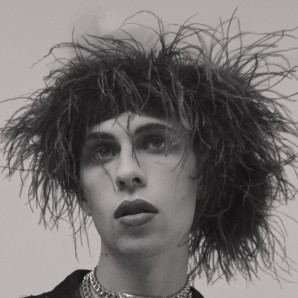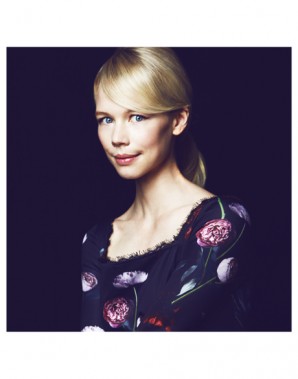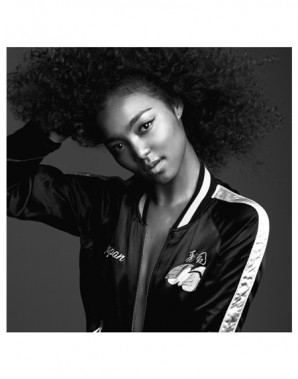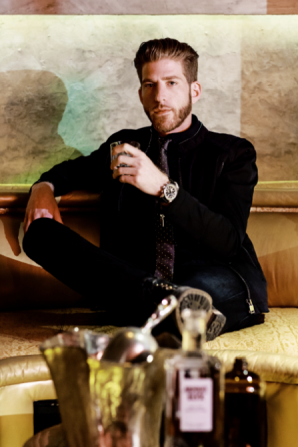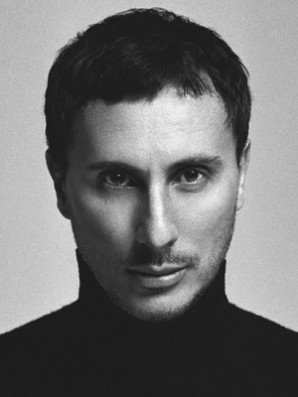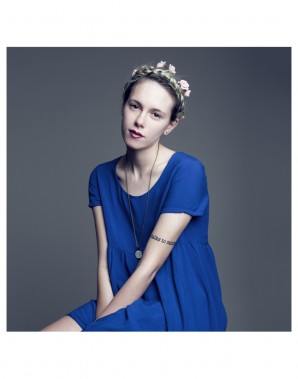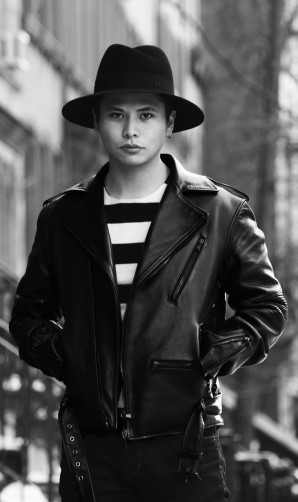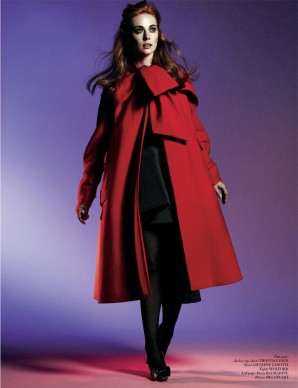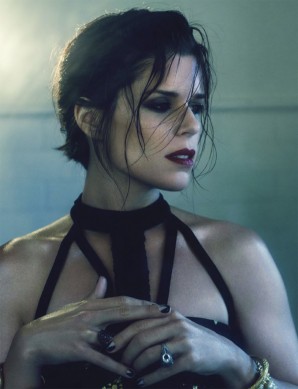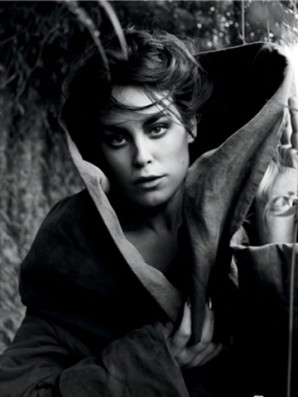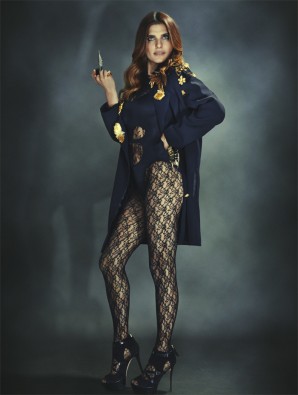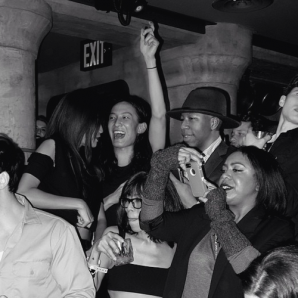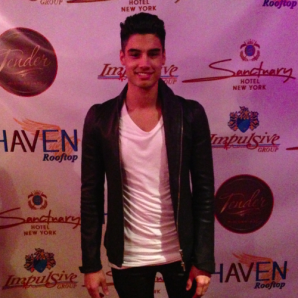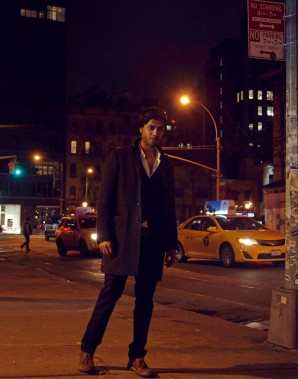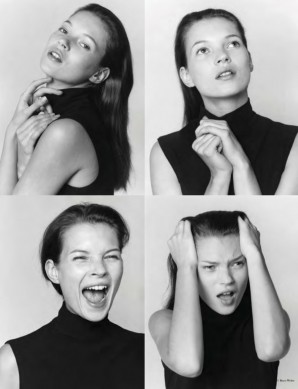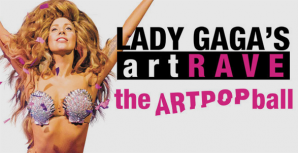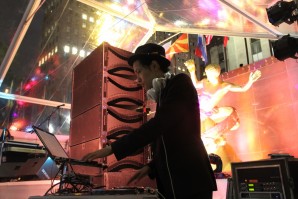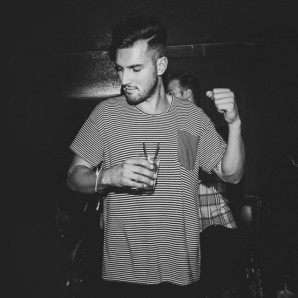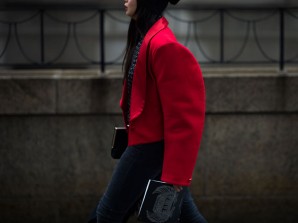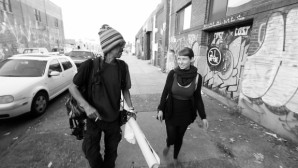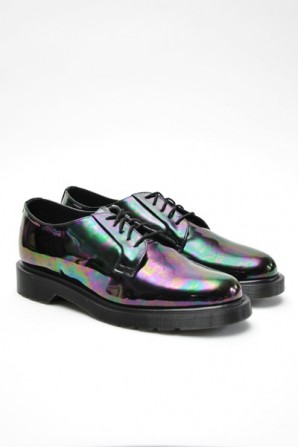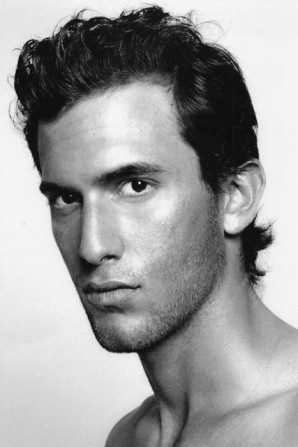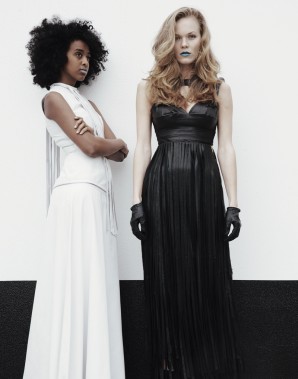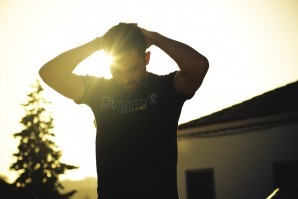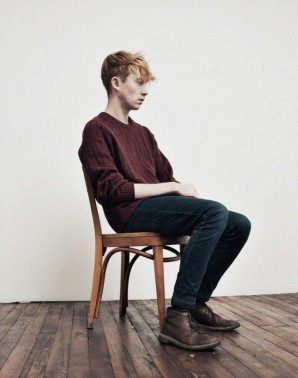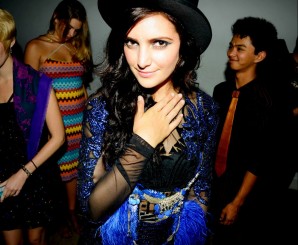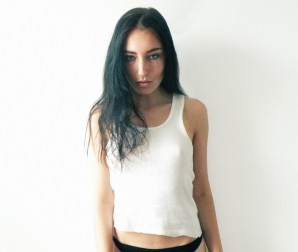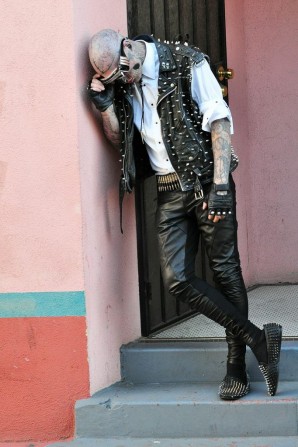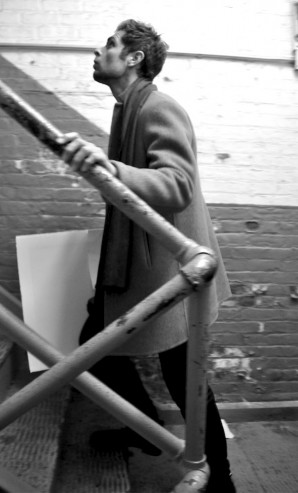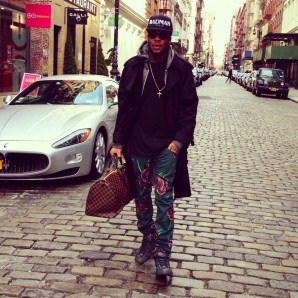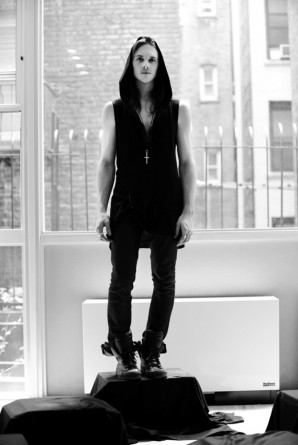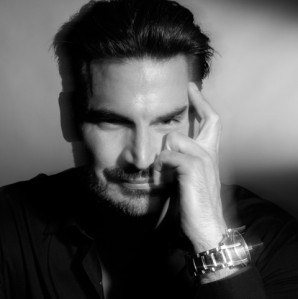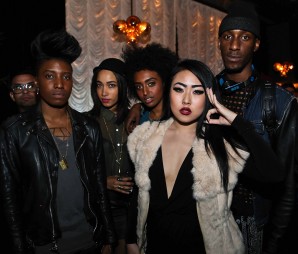TWELV takes a step back and visits the masterminds behind the camera.
MICHEL GONDRY INTERVIEW
“MAYBE WE CAN BE IMMERSED IN MOVIES BECAUSE WE’RE USED TO DREAMING.”
The ever-surprising Michel Gondry flexes his creative muscle by shifting between blockbuster (Eternal Sunshine of the Spotless Mind) and art house films (The Science of Sleep), music videos (Björk: Volumen), and documentaries (Block Party with Dave Chappelle) with equal dexterity. His latest release, The We and the I, combines elements of documentary and fiction, using a cast of amateur actors from a community center in the Bronx and telling their stories over the course of an after-school bus ride. His upcoming Mood Indigo, starring Audrey Tautou and Romain Duris, promises to return us to familiarly surreal Gondry territory.
TWELV spoke with Michel about his recent and upcoming films, the connection between film and dreaming, and the importance of making magic in front of the camera.
How did the idea of The We and the I come about?
I got the idea when I was riding a bus in Paris 20 years ago. I think everyone’s experienced being on a bus when a full class of kids takes over. I paid attention to what was said, and as obnoxious as the situation was in the begin- ning, it got more and more interesting as the kids left the bus. The two last kids were sitting behind me and I could hear their conversation, I saw how the dynamic had changed as kids got off.
What are you working on now?
I’m finishing a movie in Paris called Mood Indigo, based on the very famous French novel called “L’écume des Jours” or “The Foam of Days”. It’s a very romantic story, told in a surrealist way. The feelings of the main character are reflected on the place where they live, their apartment is sort of transforming as this girl is being consumed by her sickness.
How did you get involved in that?
The woman who handles the heritage of this writer came to me and asked, because some of my movies are close to the universe of this writer—which is true because I read it when I was an adolescent and he had a great influence on my imagination.
You’re known for your exploration of dreams, and your incorporation of a lot of surrealistic, dreamlike elements into your work. Why do dreams interest you?
I’ve always been intrigued by them. When I started to make movies, I noticed that the way we dream is closer to the way films are made than to waking life—there is transition, and you can go from one space to another in dreams, when in reality there’s one continuity. Maybe we can be immersed in movies because we’re used to dreaming.
You see a connection between dreaming and film as a medium?
Yeah, it’s the way we forget so quickly when the film starts that it’s a juxtaposition of separate pieces, you forget about that, and forget you’re sitting there watching a screen, and you get absorbed. That’s not how you experience life. In life, you don’t jump from one scene to another.
It seems like something you often explore is the way memories, or stories and ideas, become distorted, and how the distortion ends up becoming a reality.
I think I’m more skeptical than average when someone tells me a story that seems to be extraordinary or magical. I al- ways keep in mind that strong element that’s created when a story is told and repeated. People always forget this element in the equation, that each time a story is repeated a layer is added, so the imaginary can become real.
Do you make use of that in your work?
Yes, I’m very intrigued by that. Let’s say somebody is talk- ing to me and because of my lack of good English, I have to be creative to keep making sense, to keep understanding the conversation. This work, I find quite creative—you have a glimpse of continuity and then you have to create bridges from your own imagination to try to make sense of some- thing. A lot of optical illusions come from that. Your brain is really wired to interpret and make sense of everything you see, so when you see an image that doesn’t make sense to you, you try in different ways to make sense out of it. You create a sort of new reality to explain what you’re looking at.
And illusion is especially interesting in your work. I was just watch- ing the music video you did with Paul McCartney and your expla- nation of how it was done—how you created the effect of ghosts us- ing reflections of people in glass while you were shooting. You make the illusion material, which is rare now in movies.
Now when you see a screen, you’re expecting to see any- thing possible. You can’t be surprised because you know images can be built from scratch. But if you look at reality and see something illogical, you have to figure it out. Even though the work I do ends up on the screen, I try to create that feeling of disbelief before the image is shot and pro- jected. You can always believe something was done in post- production, but if those images are created in reality, you can feel the effect; you feel that the magic existed before it was shot and the camera was just there to transmit it.
It’s very ropes-and-pulleys, real magic.
It’s like when you’re watching puppets, you know they’re controlled by strings, but they have a very sort of scary life— even though you know how it’s made you can’t help but feel that the puppet is alive. I try to create that when I create an effect for the screen.
What’s something you hope for all your work to accomplish?
I think it’s about how I try to portray a character in the story. I want them to remain as human as possible. In any context or any story I’m trying to tell, I want to keep the human- ity. That’s the most important quality to me, the feeling of closeness to the actor or the character when you watch the film.
Where do you create that feeling? Does it start in the writing?
It happens in all the stages, the writing, the shooting, the acting, the directing. This particular element maybe hap- pens more during the shooting. I try to get people to be themselves as much as I can.
How has your work evolved since you began as a director?
I’ve been going back and forth between bigger and smaller movies and between documentaries and fiction, and I al- ways try to learn from one project and apply it to another. I try to make the moment happen in real life, so when you’re watching the movie you don’t feel you’re being told a story step-by-step, you feel like you’re watching life unfolding. But analyzing my own film is really next to impossible, be- cause I have memories of the experience from the begin- ning. Even when I watch movies by other people, some- times I have to forget about the process.
As a director is it difficult to objectively watch movies by other di- rectors?
Not always, but very often. I remember one day before I was a director, I realized that for every image you see on TV or in a movie, there’s an actor, there’s a camera, and then behind the camera there are fifty people watching silently. I’m very sorry, I shouldn’t have told that to you. Next time you watch a movie it’s going to kill it for you.
I know, you’ve ruined it!
I’m so sorry, I’m sure you’ll forget again after a while.
WRITTEN BY CHARLOTTE O’DONNELL
EDITED BY ERINA NAKAZAWA
related posts
IKEMEN #24: LUKE ABBY
IKEMEN (ē´k´mɛn): Japanese Slang
"REALLY, REALLY, RIDICULOUSLY GOOD LOOKING PEOPLE"
ERIN FETHERSTON EXCLUSIVE INTERVIEW
NAME: Erin Fetherston
ORIGIN: California
OCCUPATION: Fashion Designer
CRYSTAL KAY EXCLUSIVE INTERVIEW
NAME: Crystal Kay
ORIGIN: Yokohama, Japan
OCCUPATION: Performer and musician
IKEMEN #23: ANSONI
IKEMEN (ē´k´mɛn): Japanese Slang
"REALLY, REALLY, RIDICULOUSLY GOOD LOOKING PEOPLE"
IKEMEN #22: ADAM SPOONT
IKEMEN (ē´k´mɛn): Japanese Slang
"REALLY, REALLY, RIDICULOUSLY GOOD LOOKING PEOPLE"
BABËL New York Celebrates 1 Year Anniversary With Two Day Event of Excess and Splendor
BABEL NEW YORK acclaimed the NYC party scene in celebration of their First Year Anniversary. As temperatures begin to heat up in NYC, there is no better locale than the much desired rooftop.
BEHIND THE SCENES #2: LUIGI MURENU
TWELV's Behind the Scenes takes a step back and visits the masterminds behind the camera.
IKEMEN #21: MICHELLE VON MANDEL
IKEMEN (ē´k´mɛn): Japanese Slang
"REALLY, REALLY, RIDICULOUSLY GOOD LOOKING PEOPLE"
IKEMEN #20: GEORGE INAKI
IKEMEN (ē´k´mɛn): Japanese Slang
"REALLY, REALLY, RIDICULOUSLY GOOD LOOKING PEOPLE"
DEBORAH ANN WOLL: ALL THE WORLD'S A STAGE
Deborah Ann Woll’s voice glows when she speaks, as warm and full as her golden red hair.
NEVE CAMPBELL: LOSE YOURSELF TO DANCE
Carrying over two decades of the industry on her back, there aren’t many women with the grace and stoicism of Neve Campbell.
GARETH PUGH: ORGANIZED CHAOS
Gareth Pugh is a study in contrasts; balancing the demands of what is created and what is worn; what is in a designer’s control and what is in the hands of the wearer; what must be planned and...
LAKE BELL: THE GREAT LAKE
Lake Bell has made a name for herself as a charming, beautiful, and witty New Yorker capable of indie and blockbuster success (“It’s Complicated”, “No Strings Attached”, “Children’s Hospital...
FRIDAY'S FW PARTY
With Fashion Week’s second day over, Friday night was primetime for some of the most prominent designer to celebrate their successes over a glass of champagne.
IKEMEN #19: SAMAR SAJJAD
IKEMEN (ē´k´mɛn): Japanese Slang
"REALLY, REALLY, RIDICULOUSLY GOOD LOOKING PEOPLE"
Happy Birthday, Kate the Great!
Happy birthday to everyone’s favorite super model Kate Moss. The Brit enters her 40th year with grace, and she looks better than ever.
Lady Gaga's ArtPop Ball
Lady Gaga is back, and this time, it’s not just to perform.
IKEMEN #18: KEIICHIRO NAKAJIMA
IKEMEN (ē´k´mɛn): Japanese Slang
"REALLY, REALLY, RIDICULOUSLY GOOD LOOKING PEOPLE"
IKEMEN #16: KAROLYN PHO
IKEMEN (ē´k´mɛn): Japanese Slang
"REALLY, REALLY, RIDICULOUSLY GOOD LOOKING PEOPLE"
Futura Bold
Futura came up in the grimy, visceral environment of New York City’s early 1970’s street culture of tagging, bombing and writing graffiti – making their art not in the city, but on top of it.
FROM AUSTRALIA WITH LOVE: WHAT I'VE LEARNED SO FAR
Buyer’s Regret: It’s just like buyer’s remorse only in reverse. And it is a fashion crime that I have and will probably continue to commit time and time again.
IKEMEN #15: EDOARDO IANNUZZI
IKEMEN (ē´k´mɛn): Japanese Slang
"REALLY, REALLY, RIDICULOUSLY GOOD LOOKING PEOPLE"
FROM AUSTRALIA WITH LOVE: Designer Profile of Gabriella Ferrante
I find that Australia’s fashion industry can sometime be accused of playing catch-up with other, bigger and more cosmopolitan locations (i.e. Paris, London etc…) This needn’t be the case.
IKEMEN #14: Joao Veiga de Aguiar
IKEMEN (ē´k´mɛn): Japanese Slang
"REALLY, REALLY, RIDICULOUSLY GOOD LOOKING PEOPLE"
FROM AUSTRALIA WITH LOVE: PRETTY BOYS DON'T BUY THEIR OWN DRINKS
Its no secret if you know me – I like to drink.
IKEMEN #13: NATALIE O'BRIEN
IKEMEN (ē´k´mɛn): Japanese Slang
"REALLY, REALLY, RIDICULOUSLY GOOD LOOKING PEOPLE"
IKEMEN #12: KRISTIN PRIM
IKEMEN (ē´k´mɛn): Japanese Slang
"REALLY, REALLY, RIDICULOUSLY GOOD LOOKING PEOPLE"
ARTIST, MODEL, AND LIVING PIECE OF ART: ZOMBIE BOY
From Zombie Boy to living icon, Rick Genest isn’t just Nicola Formichetti’s muse anymore.
IKEMEN #11: JAY PAAVONPERA
IKEMEN (ē´k´mɛn): Japanese Slang
"REALLY, REALLY, RIDICULOUSLY GOOD LOOKING PEOPLE"
DON'T CALL DELANO BROWN A DESIGNER
TWELV met up with the always-unpredictable artist Delano Brown for lunch in Bryant Park.
IKEMEN #10: LOGAN NEITZEL
IKEMEN (ē´k´mɛn): Japanese Slang
"REALLY, REALLY, RIDICULOUSLY GOOD LOOKING PEOPLE"
Rocco Leo Gaglioti
Who are you?
Rocco Leo Gaglioti Creator/Host of Fashion News Live and Owner/CEO of RLG Productions, Corp.
NICOLA FORMICHETTI TUMBLR MEETUP HIGHLIGHTS
“My job feels more like a hobby than a job, really; it’s always fun,” says Nicola Formichetti for TWELV’s second issue.

